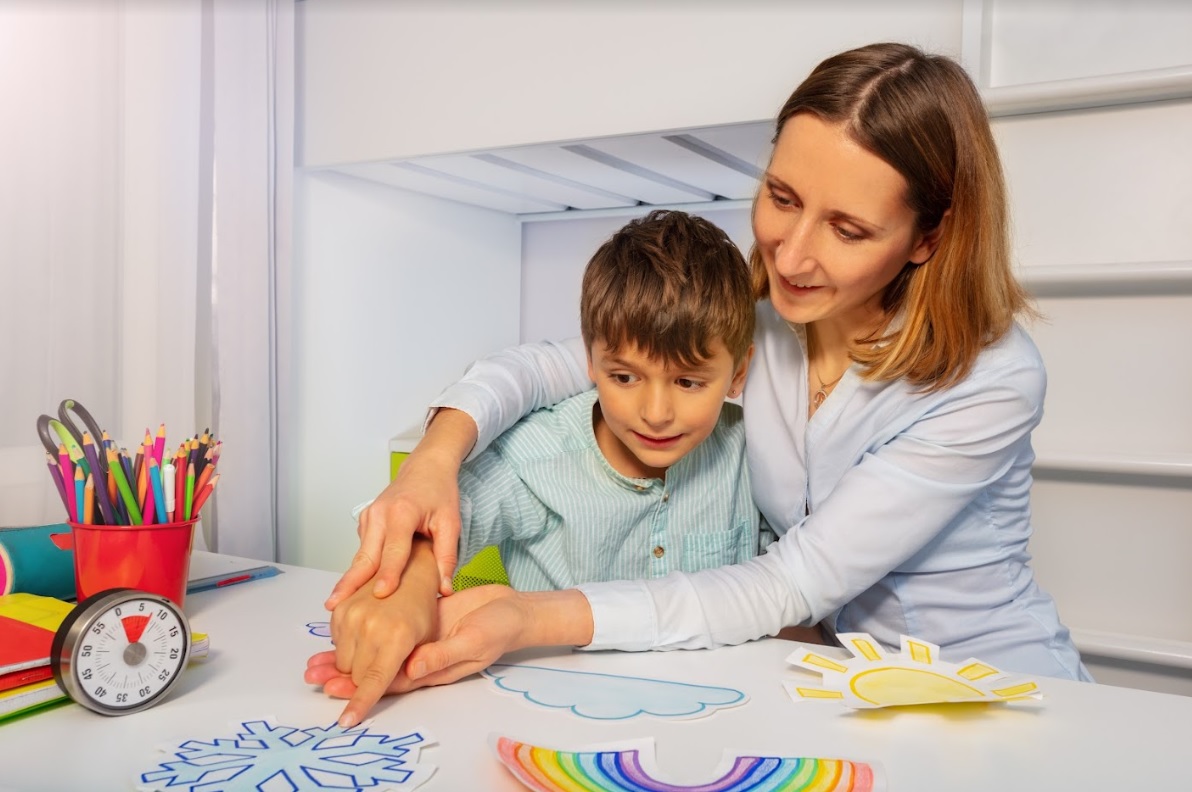Autism, or autism spectrum disorder (ASD), is a complex developmental condition that affects communication, social interaction, and behavior. It is called a “spectrum” disorder because the symptoms and severity of autism can vary widely among individuals. Some individuals with autism may have mild symptoms and be able to live independently, while others may have more severe symptoms and require significant support throughout their lives.
What is Autism?
Research has shown that autism is a neurodevelopmental disorder that affects the way the brain processes and responds to information. This can lead to difficulties with communication, social interaction, and behavior. While the exact causes of autism are not fully understood, research has identified several genetic and environmental factors that potentially contribute to the development of autism. For example, studies have shown that specific genetic mutations and variations in brain development may increase the risk of autism. Additionally, factors such as exposure to toxins and prenatal infections may also play a role in the development of autism (source: National Institute of Neurological Disorders and Stroke).
Is There a Cure for Autism?
It is important to note that there is no cure for autism, but early intervention, therapies, and support can help individuals with autism learn to manage their symptoms and achieve their goals. With ongoing research and a commitment to supporting individuals with autism, we can continue to learn more about this complex condition and improve the lives of those who are affected by it.
Finding the right therapist for ASD is crucial. You can always use services like Therapy Helpers to get matched with the right professional.
What Causes Autism?
Autism spectrum disorder (ASD) is a condition that affects the brain’s development and functioning. While the exact causes of autism are not fully understood, research suggests that genetics and environmental factors may play a role. Autism is a spectrum disorder, meaning that it affects individuals differently and to varying degrees. Some individuals may have milder symptoms, while others may have more severe challenges.
Characteristics of Autism
- Difficulties with social communication: Individuals with autism may have difficulty understanding and using nonverbal cues, such as facial expressions and body language. They may also have trouble with social interactions and may struggle to initiate or maintain conversations.
- Repetitive behaviors: Many individuals with autism engage in repetitive behaviors, such as hand-flapping or lining up toys in a certain way. They may also have specific routines or rituals that they need to follow.
- Narrow interests: Individuals with autism may have intense interests in a particular topic or subject and may focus on it to the exclusion of other activities or topics.
- Sensory challenges: Many individuals with autism are sensitive to sensory stimuli, such as bright lights, loud noises, or certain textures.

What Support is Available for Autism?
While there is no cure for autism, there are many support and resources available for individuals with autism that can help them manage their symptoms and improve their quality of life. Here are some of the support and resources available for individuals with autism:
- Early intervention: Early intervention is critical for individuals with autism. The earlier a child receives a diagnosis and starts receiving treatment, the better their outcomes are likely to be. Early intervention can include therapies such as Applied Behavior Analysis (ABA), speech therapy, and occupational therapy.
- Behavioral and cognitive therapies: Behavioral and cognitive therapies can help individuals with autism learn social skills, manage anxiety and sensory issues, and improve their communication abilities. ABA is a widely used therapy that focuses on teaching new skills and behaviors, while CBT can help individuals with autism learn coping strategies for managing anxiety and other challenges.
- Support groups and community organizations: There are many support groups and community organizations that offer resources, social connections, and advocacy for individuals with autism and their families. These groups can provide a sense of community and support for individuals with autism and their loved ones.
- Assistive technology and accommodations: Assistive technology and accommodations can help individuals with autism in their daily lives and in the workplace. For example, noise-canceling headphones can help individuals with autism manage sensory overload, while visual schedules and checklists can help them stay organized and focused.
Latest Technology for Autism
There are several emerging technologies that are being developed to support individuals with autism. Here are some of the latest technologies for autism:
- Wearable technology: Devices such as smartwatches and fitness trackers can be used to monitor physiological and behavioral data in individuals with autism. For example, wearable devices can track heart rate, sleep patterns, and physical activity levels, which can provide valuable insights into an individual’s health and well-being.
- Virtual reality: Virtual reality (VR) technology is being used to create immersive environments that can help individuals with autism learn and practice social skills in a safe and controlled setting. For example, VR simulations can be used to teach individuals with autism how to navigate social situations and manage anxiety.
- Robots: Robots are being developed to support individuals with autism in various settings, such as schools and therapy clinics. Robots can be programmed to provide social cues and engage in interactive play, which can help individuals with autism develop social skills and improve communication.
- Apps: There are numerous apps available that can help individuals with autism develop and practice social skills, manage anxiety, and improve communication. These apps can be used on smartphones and tablets, making them easily accessible and portable.
- Artificial intelligence: Artificial intelligence (AI) is being used to develop personalized interventions and therapies for individuals with autism. AI algorithms can analyze data and identify patterns in an individual’s behavior, which can be used to develop customized interventions that are tailored to their specific needs and preferences.
Overall, these emerging technologies have the potential to transform the way we support and empower individuals with autism. By leveraging the latest advances in technology, we can develop innovative solutions that help individuals with autism reach their full potential and lead fulfilling lives.
How To Empower Those with Autism?
Individuals with autism can also empower themselves by advocating for their needs and practicing self-care. Here are some ways that individuals with autism can advocate for themselves and take care of their mental health:
- Self-advocacy: Individuals with autism can learn to advocate for their needs by communicating their challenges and preferences to others. This can include speaking up about accommodations they need, asking for help when they need it, and setting boundaries in social situations.
- Building a support network: Building a support network of friends, family, and professionals who understand and support them can help individuals with autism feel less isolated and more connected to their communities. This can include joining support groups, attending autism-friendly events, and seeking out mentors or role models who have experience with autism.
- Practicing self-care: Taking care of one’s mental health is essential for individuals with autism. This can include engaging in activities that bring joy and relaxation, such as hobbies or mindfulness practices. It can also mean taking breaks when feeling overwhelmed or stressed, setting realistic goals, and seeking professional help if needed.

Raising Awareness of Autism
Raising awareness about autism is essential to help people understand and support individuals with autism. Here are some ways that we can raise more awareness of autism:
- Share personal stories: Personal stories from individuals with autism and their families can help people understand what it’s like to live with autism. Sharing personal stories can raise awareness about the challenges that individuals with autism face and the resources and support that are available to them.
- Participate in autism awareness events: Participating in autism awareness events, such as walks or runs, can help raise awareness and funds for autism research and support organizations. These events can also bring together individuals with autism and their families, creating a sense of community and support.
- Educate others: Educating others about autism can help raise awareness and reduce stigma. This can include sharing information about the characteristics of autism, how to interact with individuals with autism, and the resources and support available for individuals with autism.
- Advocate for inclusion: Advocating for the inclusion and acceptance of individuals with autism in schools, workplaces, and communities can help create a more inclusive and accepting society. This can include advocating for accommodations and support for individuals with autism, promoting neurodiversity, and challenging stereotypes and misconceptions about autism.
- Use social media: Social media can be a powerful tool for raising awareness about autism. Sharing information, personal stories, and resources on social media platforms can reach a broad audience and help raise awareness about autism.
Overall, raising awareness about autism requires ongoing efforts and a commitment to promoting acceptance and understanding. By working together and using our voices to raise awareness and advocate for inclusion and support, we can create a more inclusive and accepting society for individuals with autism.
In Conclusion: Is There Hope for Autism?
While autism is a complex and challenging condition, there is hope for individuals with autism. With early intervention, therapies, and support, individuals with autism can learn to manage their symptoms and achieve their goals. Advocacy, self-care, and building a support network can also empower individuals with autism to live fulfilling lives and contribute to their communities.
It’s important to remember that autism is a spectrum disorder, and every individual with autism is unique. What works for one person may not work for another, and there is no one-size-fits-all solution. However, with patience, understanding, and access to resources and support, individuals with autism can thrive and lead fulfilling lives.
Overall, it is vital to continue raising awareness about autism and supporting individuals with autism in their journey toward self-discovery, growth, and success. By creating a more inclusive and accepting society, we can help individuals with autism reach their full potential and contribute their unique perspectives and talents to the world.
References
- National Institute of Neurological Disorders and Stroke. Autism Spectrum Disorder Fact Sheet. https://www.ninds.nih.gov/health-information/disorders/autism-spectrum-disorder
- Baio J, Wiggins L, Christensen DL, et al. Prevalence of Autism Spectrum Disorder Among Children Aged 8 Years — Autism and Developmental Disabilities Monitoring Network, 11 Sites, United States, 2014. MMWR Surveill Summ 2018;67(No. SS-6):1–23. https://www.cdc.gov/mmwr/volumes/67/ss/ss6706a1.htm
- Lai MC, Lombardo MV, Baron-Cohen S. Autism. Lancet. 2014;383(9920):896-910. doi:10.1016/S0140-6736(13)61539-1. https://www.thelancet.com/journals/lancet/article/PIIS0140-6736(13)61539-1/fulltext
